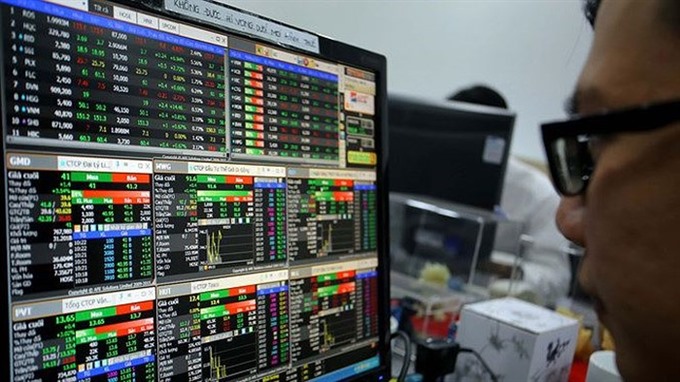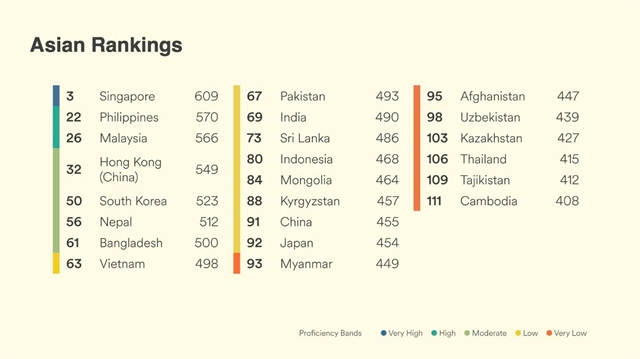 Economy
Economy

The Vietnam Securities Depository (VSD) on Wednesday said it would apply a new minimum initial margin ratio of 13 per cent instead of the previous 10 per cent for VN30 Index futures to avoid violations and ensure the security of the derivatives market.
 |
| The Vietnam Securities Depository (VSD) on Wednesday said it would apply a new minimum initial margin ratio of 13 per cent instead of the previous 10 per cent for VN30 Index futures to avoid violations and ensure the security of the derivatives market.— Photo tienphong.vn |
HÀ NỘI — The Vietnam Securities Depository (VSD) on Wednesday said it would apply a new minimum initial margin ratio of 13 per cent instead of the previous 10 per cent for VN30 Index futures to avoid violations and ensure the security of the derivatives market.
The initial margin is the minimum collateral value deposited with the VSD to meet the requirements of clearing members’ positions which are expected to open before trading, except close-out positions of the same trading account.
The VSD on Friday “sent a written notice to clearing members about the adjustment” and requested them to “review, recalculate the margin requirement value in accordance with new minimum margin requirements on each investor accounts,” the market regulator said on its website on Tuesday.
Clearing members should ask for “additional deposits (if necessary)” to avoid “violation of collateral usage rate” and “assure the safety and smoothness of clearing and settlement,” it said.
The previous minimum initial margin ratio of 10 per cent had been applied for the VN30 Index futures derivatives market since its establishment in August 2017. It meant clearing members must deposit at least 10 per cent of the value of the positions placed by clearing members, including positions set by investors.
Based on the initial margin ratio of 10 per cent set by the VSD, clearing members had to calculate and regulate their own initial margin rates for their clients that could range between 12.8 per cent to 15 per cent.
According to VSD general director Dương Văn Thanh, the minimum initial margin ratio of 10 per cent had proven reasonable during the first year of the derivatives market, helping it to minimise risks in case investors and clearing members were unable to make payments for trading settlement and clearing.
In the first year of the derivatives market, the VSD acknowledged the stock and derivatives markets had experienced volatile sessions during which the blue-chip VN30 Index on the reference market and its futures values had fallen by large margins, for example, 55 points, Thanh told tinnhanhchungkhoan.vn.
By July 6, the initial margin rate on the derivatives market had moved between 11.2 per cent and 14.5 per cent during the 252 prior sessions, which was a big increase compared to the rate of 4.4-13.6 per cent when the market was launched last year, he said.
That was the reason the VSD had asked the State Securities Commission to raise the minimum initial margin ratio to 13 per cent to improve risk prevention and ensure investors and clearing members were able to trade given the market’s current volatility, Thanh added.
“The new ratio is not too high and investors should not worry about increasing their deposits at clearing members, reducing pressure on the market’s overall sentiment.”
The re-calculation and adjustment of initial margin ratios is normal for market regulators that are responsible for clearing and settlement and managing trading risks. For example, the South Korean market regulator in 2013 tightened the requirements for any individual investors that wanted to trade derivatives products. China in 2015 increased its minimum initial margin ratio to 40 per cent from 30 per cent combined with the number of futures positions that could be opened to below 10 contracts.
According to Bùi Nguyên Khoa, head of the market macroeconomics division at BIDV Securities Co, the latest increase of the minimum initial margin ratio was a smart move by the VSD as VN30 futures had not reflected the true quality of the stock market and misled investors about its prospects.
“The hike is not over the top and is expected to help reduce the potential risks on the derivatives market and maintain its attractiveness to investors,” Khoa said.
Investors should not blame derivatives trading for the steep decline of local stocks in the past three months, he added, as the slump in the stock market was mainly due to profit-taking and the negative impacts of US-China trade tensions.
Trading value on the HCM Stock Exchange has fallen to around VNĐ3 trillion (US$133.3 million) each session from about VNĐ9-10 trillion in the last three months, while the trading value of VN30 futures has risen to as much as VNĐ14 trillion recently.
“Based on the new margin ratio of 13 per cent, the real injection of capital into the derivatives market is around VNĐ1.6 trillion,” Khoa said. “But as the derivatives market requires big leverage and investors should save 50 per cent of their money for risk provision, the real injection into derivatives futures may be around VNĐ2.5 trillion, 1.5 times the practical margin amount.” — VNS









